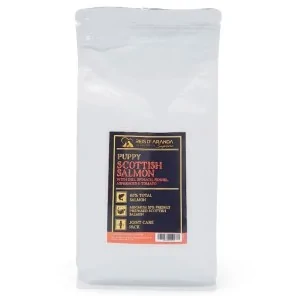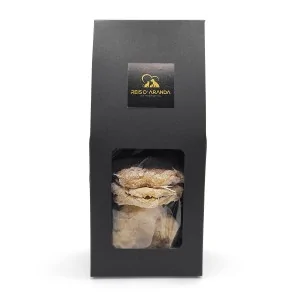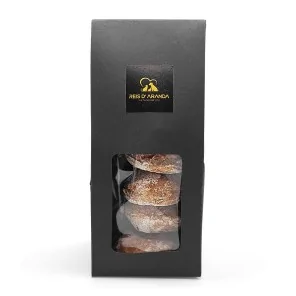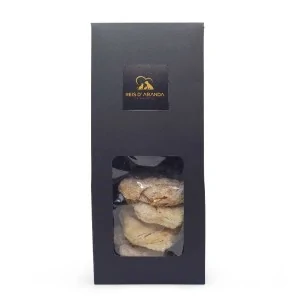The Tornjak originated from genetically homogeneous, almost extinct, indigenous shepherd dogs. These dogs have...
THE PULI
INTRODUCTION
Puli - also called Pulik and Hungarian Puli - is a small-medium dog breed from Hungary. They are used as sheepdogs and police dogs and are known for their long corded coat or dreadlocks.
THE ORIEN OF THE PULI
The Puli (plural Pulik) is a Hungarian bred ancestor of Asian origin. It is believed that the Puli is descended from the Tibetan Terrier. The Tibetan was brought from Hungary before 900 BC by nomadic tribes. The name Puli means herding and destructive.
Colour and size play an enormous role in the development of the Puli as a herding dog. The lighter colour is when the Puli is the guardian of the herds protecting them from rustlers and wild animals at night, blending in with his handlers. The darker colour of the Puli was used for driving and herding during the day. The breed has always been known for its herding instincts.
All dogs bred in Hungary were almost destroyed during World War II, but by that time the Puli had earned its place as a companion. The dog was taken to other countries and bred to preserve the breed, most notably in North America. In 1935, a few specimens of the breed were imported to the United States for use as guardian herders in an experiment. Although World War II interrupted this experiment, the dog made an impact in America.
THE STANDARD OF THE PULI
GENERAL APPEARANCE : Dog of medium size, firm build, square body construction and delicate bone structure without being too fine. The body, more or less wiry, is nevertheless well muscled throughout. The structure of the individual parts of the body is sometimes difficult to judge as the whole body is covered with a characteristic, strongly developed coat, which forms tufts and cords. This is why it is essential to touch all parts of the dog during judging. The hair on the head is so abundant that it gives the impression of being round and the eyes are covered. The tail, abundantly covered with hair, is curled forward and rests on the croup. In the dog as a whole, this causes, in appearance, a slight elevation of the topline towards the rear.
IMPORTANT PROPORTIONS
- The length of the body corresponds to the height at the withers.
- The depth of the chest is slightly less than half the height at the withers.
- The length of the muzzle corresponds to one third of the length of the head.
HEAD: Seen from the front round, seen from the side it appears elliptical.
CRANIAL REGION
SKULL : Small and fine. Strongly developed supraciliary arches.
STOP: Slightly marked.
FACIAL REGION
TRUFA: Relatively small, black.
NOSE: Not pointed, the nasal bridge is straight.
LIPS: Taut, dark pigmented.
TEETH : S cissor bite, complete (42 teeth according to the dental formula).
EYES: Medium size, dark brown, slightly oblique and set at medium distance from each other. The gaze is intelligent and lively. The rims of the eyelids rest firmly on the eyeball and are well pigmented.
EARS: Set on at medium height with a broad base. The ears are pendant and end downwards in a rounded ‘V’.
NECK: Of medium length, firm and well muscled. Set at an angle of 45° to the horizontal and covered with dense hair.
BODY :
UPPER LINE : Straight, because of the carriage of the tail, giving the appearance of rising gently backwards.
CROSS: Rising only minimally above the topline.
BACK: Medium length, straight, firm, muscular.
LOIN: Short, well muscled.
Croup: Short, slightly sloping.
CHEST: Deep, long, with well sprung ribs.
BOTTOM LINE: Progressively tucked up towards the rear.
TAIL: Set on medium set, carried flat over the croup, profusely covered with hair. When stretched it reaches to the hock.
LIMBS
FOREQUARTERS
Shoulders: Shoulder blade oblique and firmly attached to the rib cage. If an imaginary vertical line were to be drawn downwards from the withers, it would touch the lowest point of the front part of the thorax. The shoulder blade articulates with the humerus at an angle of 100 to 110 degrees.
Upper arm: Medium length and well muscled.
ELBOW: Lies close to the rib cage. The articulation between upper arm and forearm is 120 to 130 degrees.
FOREARM: Long, straight, with dry musculature.
HANDS: Short, rounded, firm, with fingers close together. Nails are black or dark slate grey. The pads are dark and elastic. The feet are parallel and in a forward direction, placed at medium distance from each other.
HINDQUARTERS: Parallel and set at medium distance from each other. The articulation between the hip and the leg is 100 to 110 degrees. The knee joint is 100 to 110 degrees.
Upper and lower thigh: Long and well muscled.
HIP: Dry, well defined in outline.
METATARSUS: Short.
FEET: Slightly flatter than forefeet, otherwise identical.
GAIT / MOVEMENT: Movement very active and full of temperament. Short stride. Typical movement is often with short, quick steps and small jumps. The dog has a tendency to turn on its own axis.
SKIN: Without wrinkles, firm, strongly pigmented. The hairless areas are black or slate grey in all coat colour varieties.
COAT
HAIR: The coat of puppies is dense, wavy or curly. They then grow tufts of hair and then strongly structured tufts or cords. The coat consists of a coarse outer coat and a finer undercoat. The proportion of the two types of hair interacting is what gives the coat its character. When the outer coat is much more strongly developed than the undercoat, the coat is atypical and the hairs are somewhat flat. When the undercoat is undesirably highly developed, it gives a coat type which is too soft in structure, matted, tangled and difficult to maintain. The correct, genetically determined proportion of both types of coat gives the very aesthetic, easy to maintain locks and cords.
The cords reach their maximum length (20 to 30 cm) in the regions of the loin, the rump and its immediate vicinity and on the back of the hind legs. The shortest cords are on the head and limbs (10 to 12 cm). The coat on the head is ideal when the strong cord structure is maintained, falling in an umbrella shape over the face. Unkempt, unkempt and shaggy coat is not desirable.
COLOUR
- Black
- Black with small reddish or greyish rust coloured patches.
- Fawn with distinct black mask.
On the chest a small white patch of not more than 3 cm in diameter is permitted. White between the toes is not considered a fault.
- Pearl white, without any trace of yellowish seed colour shading.
Any deviation from the above colours and markings is not desired.
SIZE AND WEIGHT
HEIGHT AT WITHERS
- Males 39 to 45 cm, ideal height 41 to 43 cm.
- Females 36 to 42 cm, ideal height 38 to 40 cm.
WEIGHT
- Males 13 to 15 kg.
- Bitches 10 to 13 kg.
FAULTS : Any departure from the foregoing points should be considered a fault and the seriousness with which the fault should be regarded should be in exact proportion to its degree and its effect upon the health and welfare of the dog.
ELIMINATING FAULTS
- Aggressive or fearful dog.
- Missing one tooth or more than one tooth of the incisors, canines, premolars 2-4 and molars 1-2. Missing more than two PM1. M3 will not be taken into consideration.
- Overshot or undershot, arches of incisors deviated.
- Sickle tail or carried horizontally.
- Short, smooth coat or isolated standing hairs.
- Colour defects and undesirable markings and spots.
- Sizes deviating from those laid down in the standard.
Any dog showing clear signs of physical or behavioural abnormalities should be disqualified.
NB: Male dogs should have two apparently normal appearing testicles fully descended into the scrotum.
HEALTH OF THE PULI
In general they are very prone to diseases due to the high friction in their coat necessarily requiring detailed examination to avoid chronic diseases or various endeamic infections, among them we name here some important diseases which regularly affect the Hungarian Puli:
- HYPOTROPHIC DERMATITIS: Chronic inflammation of the skin can occur in spite of care and nutrition. Symptoms include pruritus (itching), redness, excoriations (the outermost dermis layers of the skin are continuously scratched) and dry exudate associated with increased autoasepsis.
- ADDISON'S SYNDROME: Addison's disease affects the endocrine system and causes adrenal insufficiency. Symptoms include tiredness, weight loss and/or mild energy fluctuations/minuscule lactate.
- PATELLAR LUXATION (PLL): This is a degenerative condition affecting the dog's knees. If left uncorrected, it can result in permanent damage and pain in the knees.
Each breed can have specific health problems, and the Hungarian Puli is no exception. It is important that the Hungarian Puli's human companions are aware of these health problems and work proactively to prevent them.
The cords should be cared for daily at home and groomed once a month.
THE PULI PERSONALITY
This active, intelligent, self-confident, self-possessed and manipulative dog is fiercely devoted to his family and friends. The Puli is an extremely intelligent dog with a sense of humour and will remain happy and playful into old age. Bred to be alone with his herd working in isolation in the mountains, the dog is above all an incomparable companion. The Puli can be bearable or discriminating in his dealings with those outside the family.
Despite being a herding dog, above all the Puli is a family companion and a guardian of the family and flock. This dog feels his place in life is with his family and always puts them first and is checking on them, whether he is investigating something, working with his flock, or barking in alertness. The Puli is a good watchdog, but does not normally bark inappropriately.
As a herding dog, the Puli tends to circle and be active. The Puli often tries to ‘herd’ his people by nipping at his owners' heels. If properly trained and exercised daily, the Puli makes an excellent family companion.
CONCLUSION
The Hungarian Puli is a dog breed originating from Hungary, and has won the hearts of many people with its curly coat and judicious nature. With proper exercise and good nutrition, they can live for many years as an honourable presence. It is of an interesting nature to understand the intrinsic strengths of the Hungarian Puli and to reflect on them over time as we incorporate into him our domicile by enhancing what already comes by instinct.
Leave a comment
Log in to post comments
















